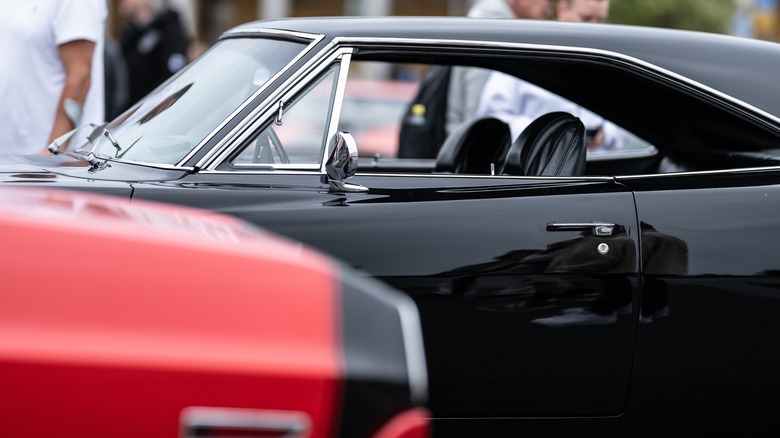Are Classic Muscle Cars Going Out Of Style? Here's What The Data Says
As with many cultural artifacts, the passing of time tends to skew our perceptions of cars greatly. Think about it this way. In 1995, you could go to a classic car show anywhere in America and see a whole bunch of lovingly-maintained classics from the mid-1960s. In 2025, you can go to a classic car show and still see lots of mint 1960s classics. The only difference today is that both the cars and the people are all 30 years older, and the new cars of the 1990s are now considered classics in their own right.
As time passes and generations shift, so too do tastes in cars, both in terms of the contemporary vehicles on the market and the classic vehicles one may yearn to buy when they have the means. Oftentimes, the popularity of a classic car is driven by people who either owned (or dreamt of owning) that car when they were younger. That's certainly been the case with the original generation of American muscle cars built roughly between 1964 and 1972, and the baby boomers they were marketed to.
But with the Boomer generation now aging well into their senior years and Gen X and Millennials making up a large part of the car hobby, there's been some speculation that the popularity of vintage muscle cars may be on the decline. Indeed, a lot of those younger enthusiasts tend to like cars from more recent eras, but data shows that the appeal of the classic American muscle car stretches beyond the Boomers.
Timeless popularity
Defined simply by the passage of time, the iconic American muscle cars of the '60s and '70s could easily be classified as antiques — a term that once, and for many still does, bring to mind images of cars with tall, wooden wheels, puttering engines, and rumble seats. While those more traditional antique vehicles have their historical significance and hobbyist following, there aren't too many 30, 40, and 50-year-olds into Model T Fords and Packards today. Vintage muscle cars, though, continue to be relevant and desired by people much younger than their original target market.
Hagerty, which specializes in insuring non-daily driver collector cars, does a great job of tracking both car values and the demographics of owners better than anyone. Per Hagerty's data on muscle car insurance quotes, recent years have shown a strong interest in muscle cars not just among that original baby boomer demographic, but also among Gen X and Millennial enthusiasts, the latter of which weren't even born until 10 years after the original muscle car era had ended in the early 1970s.
Muscle cars are an American tradition
Why have American muscle cars generally broken the trend of fading out in popularity with the generations? For some, it's a family tradition that's been handed down through generations. A baby boomer who bought a brand new Pontiac GTO as a young man may have inspired his kids and then his grandkids to love GTOs as well. There was also a second generation who got hooked on cheap, used muscle cars in the '70s and '80s before they became sought-after classics.
For many car-lovers, not just in America but around the world, there's also a certain timeless appeal to the design of something like a '68 Mustang Fastback or a '69 Camaro SS. And, no doubt, the widespread presence of American muscle cars in Hollywood movies, video games, and other pieces of pop culture has contributed to their enduring popularity among younger generations. All things considered, "stable" is probably the best word to describe the generational popularity of the classic American muscle car. In a market that can often change rapidly, that's not a bad thing to be.


